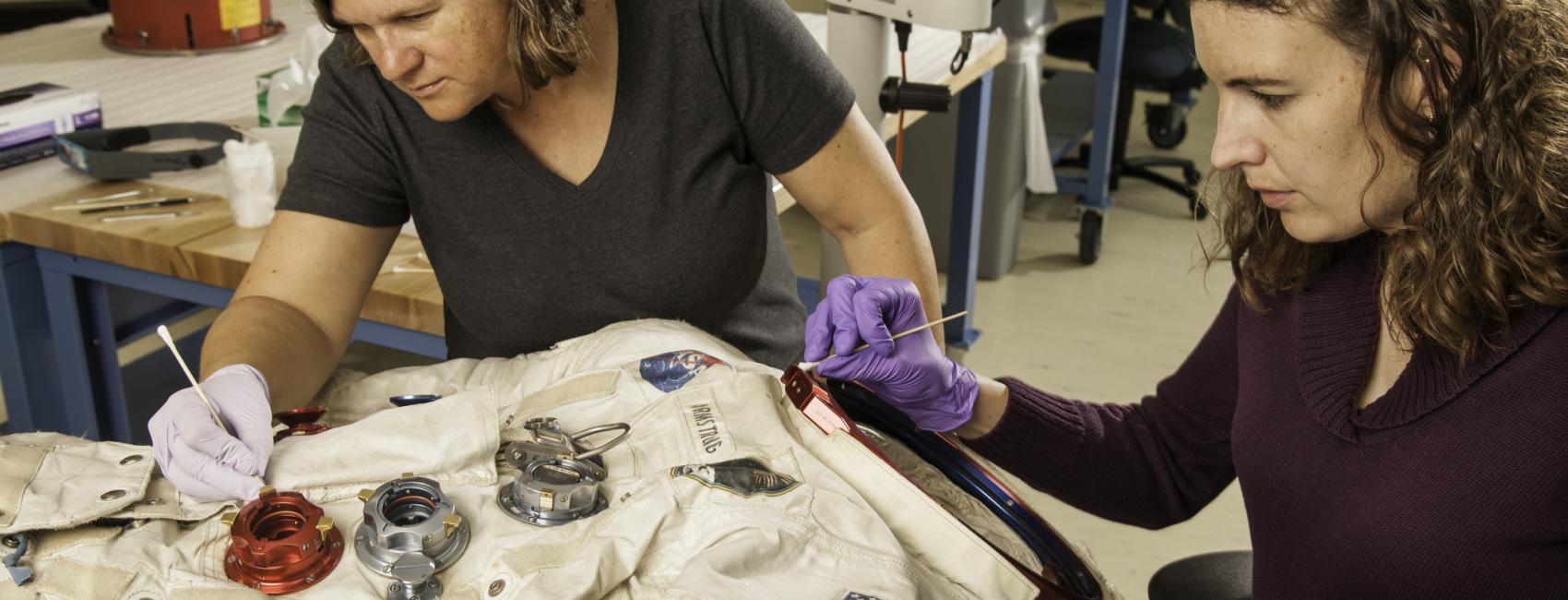
Packing for Spaceflight
Aug 13, 2012
By Valerie Neal

Aug 13, 2012
By Valerie Neal
Museum staffers are busy outfitting our new shuttle middeck for spaceflight. No, not the actual crew compartment of Discovery, now on display at the Museum’s Udvar-Hazy Center in Virginia. This middeck is a reproduction recently installed in the Moving Beyond Earth gallery at the National Air and Space Museum in Washington, DC.
The middeck is an immersive feature that brings “living and working in space” to life. Visitors are invited into the middeck to see and feel for themselves the room that shuttle crews occupied during much of their time in orbit. Without the benefit of weightlessness to permit use of the overhead volume, it is easy, and surprising, to see what close quarters a seven-person crew shared. The Museum is actively engaged in acquiring from NASA a variety of crew equipment—hundreds of small artifacts—typically used on shuttle missions. We are displaying many of these items in the middeck lockers where they would be stowed during flight. Visitors are welcome to open the lockers to see what is inside, safely installed behind glass. The contents range from ordinary (toothpaste and toothbrush) to extraordinary (gold and silver commemorative coins) flown-in-space items.
To date, lockers have been loaded with some of the normal “stuff” of life in space—food, a portable computer and microcassette recorder, a digital camera and lenses. Still to come: clothing, personal hygiene supplies, in-flight maintenance tools, experiment equipment, checklists, more cameras, and some shuttle housekeeping supplies. Some lockers ask tempting questions to encourage opening: What movie star is on board? (Buzz Lightyear!) Is soda fizzy in space? (Check out the modified Coke and Pepsi cans tried on the shuttle.) What’s for dinner? (Can you identify these processed foods?) Besides the lockers, a reproduction shuttle toilet is perched just where it should be in orbit but can be wheeled out for a demonstration. Coming soon, we will add a sleep restraint, exercise cycle, and galley in their appropriate locations and other paraphernalia from shuttle missions, including the IMAX camera. Apart from the pleasure of outfitting the middeck to give visitors insight into life in orbit, staff have paid careful attention to the actual middeck layout and sought to match locker locations to a real shuttle mission. We have selected items that suggest the full range of crew activities in orbit. Each item chosen for display undergoes an incoming inspection and condition report by our conservators, careful documentation and temporary storage by our collections managers, measurement and trial layout by the combined curatorial-exhibit design-collections care team, design and fabrication of a custom-mount to display it properly and securely without damage, and finally transport and installation into the designated locker. At the same time the artifacts are moving through this process, the exhibit team is drafting, designing, fit-checking, revising, and producing the labels that appear on or inside the locker doors. The team for the middeck project alone numbers about 20 people. The Space Shuttle era has come to an end with the retirement of the orbiters, but the practical realities of living and working in space will be accessible for some time through the Moving Beyond Earth exhibition and especially the shuttle middeck. The next time you visit the Museum in Washington, DC, stop by and explore the middeck, all packed up for spaceflight. You may find some surprises there.

We rely on the generous support of donors, sponsors, members, and other benefactors to share the history and impact of aviation and spaceflight, educate the public, and inspire future generations. With your help, we can continue to preserve and safeguard the world’s most comprehensive collection of artifacts representing the great achievements of flight and space exploration.
We rely on the generous support of donors, sponsors, members, and other benefactors to share the history and impact of aviation and spaceflight, educate the public, and inspire future generations. With your help, we can continue to preserve and safeguard the world’s most comprehensive collection of artifacts representing the great achievements of flight and space exploration.